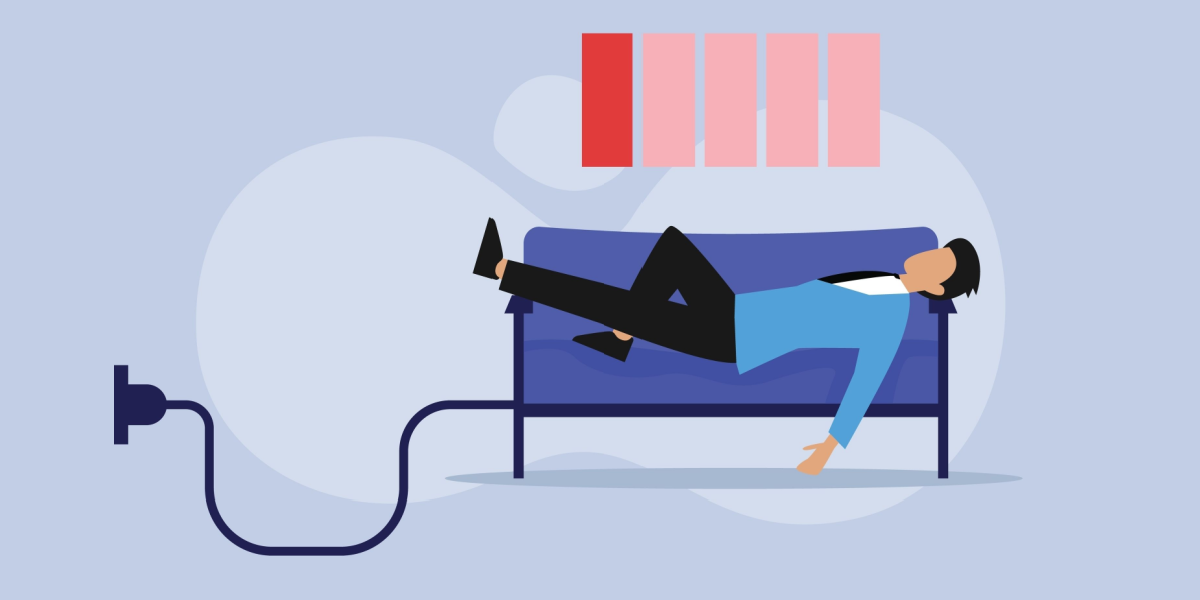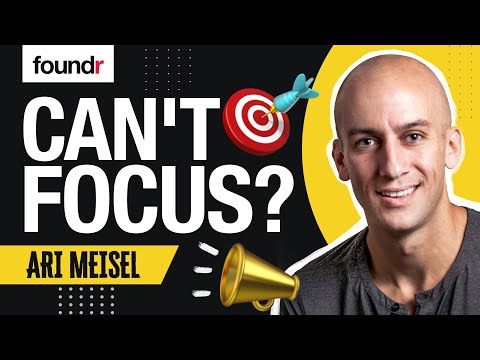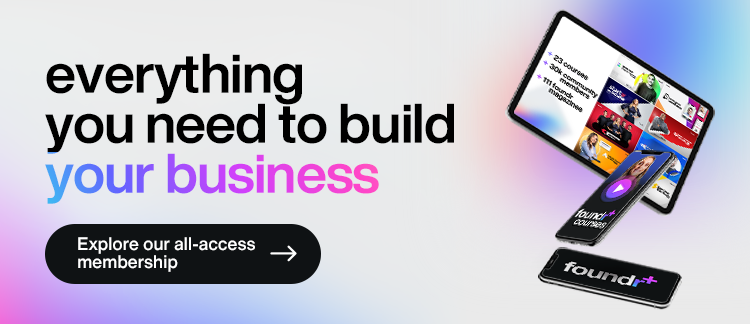What was your favorite thing about kindergarten?
For me, it was nap time. That glorious moment in the afternoon when the curtains were drawn, the lights dimmed, and all us toddlers would curl up in a cot and fall asleep. After all, after spending hours singing the alphabet song and coloring, we truly deserved a break.
But as I got older, nap time became a thing of the past. That is, until recently.
In recent years, businesses like Google, Huffington Post, and Uber are all jumping aboard the napping train. Some employers are even setting up special nap rooms or pods just for employees to get in their midday siestas.
If, like me, you’re a big fan of naps, but you’re not quite sure how they fit into your life as a hard-working adult, let me break down it down for you. But trust me, they do and they should. Here’s the science behind why naps are so important, and five ways you can turn napping into a superpower.
Why you need to nap
While you might associate napping with sleep-deprived college students, babies, or cats, it turns out they all might be onto something.
According to a Gallup poll, more than 40% of Americans get fewer than the recommended minimum of seven hours of sleep per night. In fact, lack of proper sleep is becoming so prevalent that the Centers for Disease Control and Prevention have deemed it a public health issue.
Insufficient sleep and its effects have been found to negatively impact your ability to concentrate, alertness, and your overall productivity. Exhaustion also increases your chances of accidents, as well as stress and other health-related issues.
That’s where napping comes in.
A recent study in the Journal of Sleep Research set out to find what was most effective in getting over the midday hump. You know that time of day—some point between lunch and the late afternoon depending on your sleep schedule, when you seem to be moving in slow motion and can barely stay upright in your desk. That’s a real thing.
Researchers compared results of getting more nighttime sleep, using caffeine, and taking a nap, and napping was by far the most effective.
Napping is especially important when it comes to relieving the effects of burnout, stress, and fatigue. Research subjects who napped demonstrated a greater aptitude for handling stressful situations. Along with improved cognitive function, increased energy levels, and creativity.
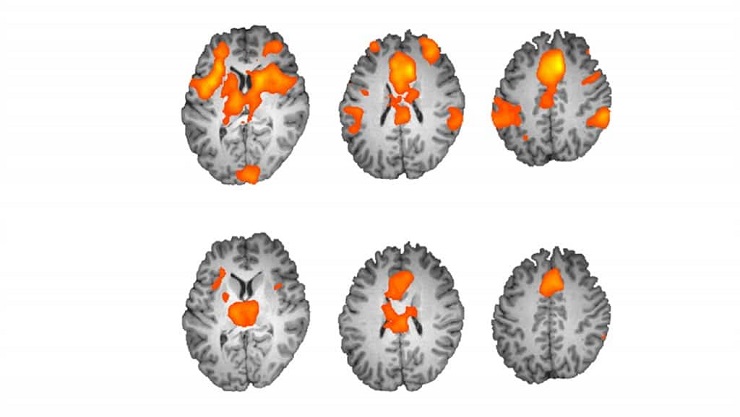
You can see how a well rested brain (top) shows significantly greater activity, when compared to a brain that’s tired and exhausted.
There are also huge health benefits to napping. A six-year study found that regular napping actually promotes good health. After studying 23,000 people, researchers concluded that people who napped at least three times a week for an average of 30 minutes per nap were 37% less likely to die from a heart-related disease.
In conclusion, you need to start taking more naps.
If you still don’t believe me, here’s a TedX talk by Dr. Sara Mednick, a sleep scientist and author of Take a Nap! Change your life!, talking about all the benefits napping provides.
The problem with napping, though, is the fact that most of us feel incredibly guilty when we do it. For most people, entrepreneurs especially, napping can make us feel like we’re being lazy or that we’re wasting time. Time that can potentially be used to do something more productive, like work.
But I’ll let you in on a little secret: The key to productivity isn’t managing your time, but your energy.
In other words, time spent without energy to accompany it is wasted.
Instead of thinking of naps as a waste of time or a sign of laziness, view it as you making a positive investment into your energy levels. Sure you might be able to get some work done in half an hour while tired. But wouldn’t it be better if you could operate at peak-level performance for the rest of the day instead?
The right nap for you
Now that we understand the power behind naps, let’s figure out the right kind of nap for you.
First up, what you want to avoid the most is emergency napping. Just like it sounds, this type of napping only happens when you’re so sleepy that you can’t engage in any further activity. You could also think of this as simply crashing, and it usually means you’re trying to run on empty.
If you find yourself having to take these emergency naps all the time, take a closer look at your overall sleeping habits and daily schedule. There might be a larger issue here that napping alone can’t solve.
What you want to strive for are planned naps, where you actually choose a strategic time and length for a nap instead of just zonking out.
The key to maximizing your performance with naps lies in the duration.
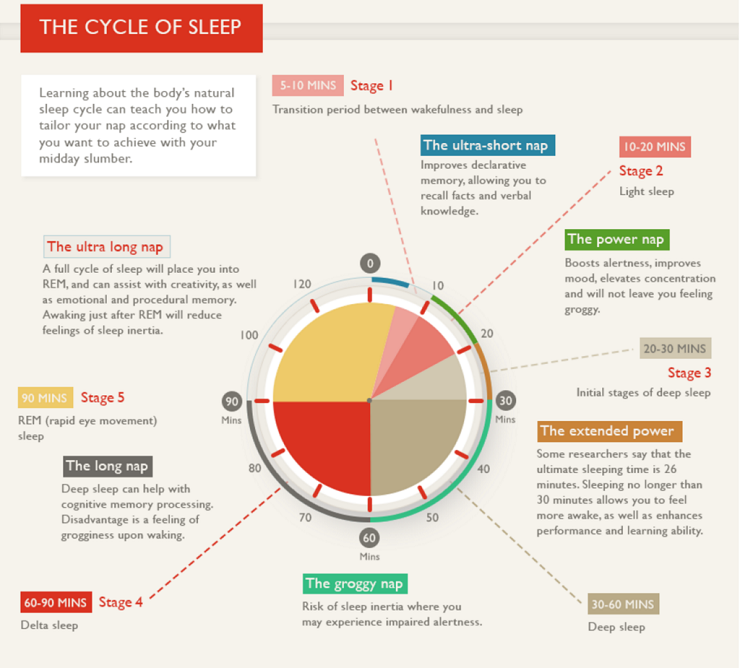
Courtesy of Swissotel (http://swissotel.com/)
Six Minutes
While this might seem too short to be effective, research has shown that ultra-short power naps can improve your declarative memory, the type of memory that allows us to recall specific facts and knowledge.
This type of nap works best for those who are starting to feel sluggish and are looking for a quick boost of alertness.
10-15 minutes
Famous artists and scientists like Salvador Dali and Einstein have long championed the effectiveness of the power nap. All of them considered it the key to unlocking their creativity.
The reason behind this lies in the fact that there are three stages of sleep. The first stage is alpha wave sleep, when your body is starting to get relaxed but you’re still fully aware of your surroundings. After that it moves into theta wave sleep, when you’re falling into a deeper sleep and your subconscious starts to activate.
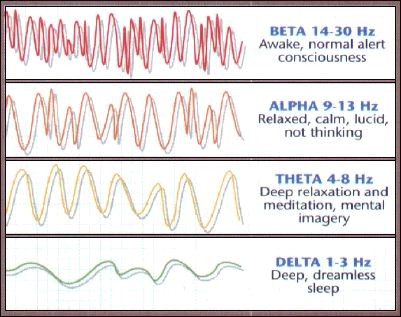
After about 10 minutes, your body starts to transition from alpha to theta wave sleep and these two waves begin to overlap. During this state, which only lasts for a few minutes, the mind is cycling through a whole series of abstract thoughts, feelings, ideas and memories. You’re basically just asleep enough to start dreaming, but awake enough to be aware of it.
This is why, when you wake up after 15 minutes, you often find your brain bursting with new, creative ideas.
In order to make sure that he always slept for the right amount of time, Dali developed something he called the “Key method.” He’d hold a key in his hand above a metal plate, and when he began to fall into a deep sleep he’d naturally let go of the key and immediately wake up. Although in your case, you can just set a timer on your phone.
20-30 minutes
For most people, a nap anywhere between 20-30 minutes is the perfect duration. It’s short enough that you don’t enter into deep sleep territory and start feeling the effects of sleep inertia (that deeply groggy and disoriented feeling when you’re yanked out of a deep slumber). But it’s long enough for your body to feel rested and rejuvenated.
A study by NASA studied the effects of napping in 747 pilots. Each participant, on average, napped for 26 minutes a day, with NASA concluding that the nap increased performance by 34% and alertness by 54%.
This type of nap is great for warding off sleepiness and exhaustion, while improving declarative memory and cognitive function. It’s a quick boost that’s great for those who find themselves feeling the sluggish effects of a midday slump.
90-120 minutes
For those who are stuck on a particular problem, the solution just might be to sleep on it. As you may have picked up, the longer the duration of the nap, the greater the effects will be when it comes to cognitive function, problem-solving, and rebalancing your nervous system.
On average it takes the human body around 90-110 minutes to complete a full sleep cycle. When you take a nap that’s longer than 60 minutes, you’re entering into deep sleep and increasing your brain’s processing power.
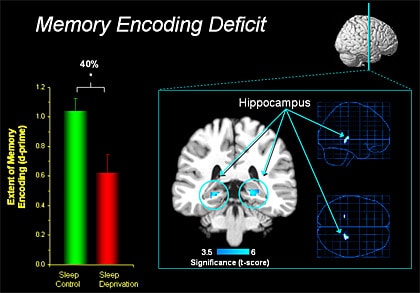
A study at Berkeley found that students who took 90-minute naps showed significantly improved function in their hippocampus, the part of the brain in control of memory. When tested the students who were 40% better at remembering and learning facts when compared to those who didn’t.
A full sleep cycle means that you gain all the benefits of a full night’s sleep and you’ll find yourself being able to function at a higher level for the rest of the day.
There’s a downside to this, however. For one, it’s a much bigger time commitment that you may not be able to spare, unless you’re in a special circumstance like following a very short night’s sleep, for example.
You also need to be careful not to nap for too short or too long, because waking up during the middle of a deep sleep cycle means you’ll be hit with sleep inertia. Hard.
Drink Coffee
If you’re looking for a way to supercharge your naps and keep yourself going for a few more hours, try drinking some coffee before you take a 10-15 minute power nap. Now this might sound like it makes no sense, but it turns out that caffeine and power naps are a match made in heaven.
A number of studies have found that it is indeed possible to combine the two and get the best of both worlds.
In order to understand how this all works, we’re going to need to get into a bit about the science of sleep and how our brain works.
Sleepiness is caused primarily by two chemicals: adenosine and melatonin. Melatonin is produced by your brain’s pineal gland and is affected by the amount of natural light you expose your body to. Adenosine, on the other hand, is a natural byproduct of energy consumption by the body.
To put it simply, the longer you’re awake the more adenosine there is in your body, and the more tired we feel as it builds up.
The reason caffeine is the miracle drug of exhausted college students everywhere is because it can effectively block our brain’s ability to respond to adenosine. Coffee sort of steals adenosine’s seat at the brain party. This is why, after drinking a cup of coffee, we often feel more energized or alert.
The reason the nap-a-ccino works so well is because of the fact that when we ingest caffeine, it usually takes about 15-20 minutes to fully enter the bloodstream. That means you have a 15-20 minute window to sneak a power nap in!
During that time, the napping naturally whisks away some of that sleepiness-inducing adenosine, clearing the competition for the incoming caffeine just as it arrives at the party.
When you wake up, not only will you have the restorative effects from taking a nap. But you’ll also be feeling the awesome effects of having caffeine in your system start kicking in.
A clinical study where a group of students were given coffee before napping, with another group given a placebo, found that those with caffeine in their systems showed a significant improvement in their cognitive ability, reaction time, and executive function.
So before you take a nap, try drinking a cup of coffee. Set an alarm for anywhere between 15-20 minutes and supercharge your productivity!
Understand your sleeping patterns
Generally, the rule of thumb is that you should take a nap any time between 1pm and 4pm. However, it’s important to remember that sleeping is highly individual, and the amount of rest one person needs can be entirely different from someone else.
Just take a look at Thomas Edison, who reportedly slept fewer than four hours a night. Although he would often take one or two naps throughout the day in order to keep himself rejuvenated.
So in order to take full advantage of your naps, you must first understand your body’s natural circadian rhythm.
Basically your circadian rhythm is your body’s internal clock, which dictates when you’ll naturally feel more energy at certain times of the day. As it turns out, evolutionarily speaking, the human body wasn’t designed to stay awake for 16 consecutive hours on end.
So it’s perfectly natural to feel tired somewhere around seven hours after waking up. It’s why most of us feel our productivity drop drastically around midday.
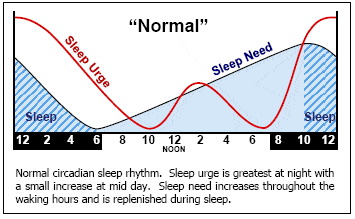
But like I said earlier, everyone’s circadian rhythm is different, so be sure to figure out whether you’re a morning lark or a night owl.
If you’re waking up at 6am, the best time for you to nap would be around 1pm. If you’re a night owl and find yourself waking up at something like 10am, the perfect time to nap would be around 4pm. Essentially you want to base your ideal time for napping around the time you get out of bed.
The reason it’s so important to pay attention to your body’s energy levels is because you want to make sure you time your naps right in order to get the most out of them. By timing it right, you’re napping when your body needs it the most and ensuring you have the right amount of energy for the rest of the day.
Take a leaf from Winston Churchill’s book and start scheduling in your naps like they’re important meetings.
Check outs apps like Calm, Pillow, or Sleep Cycle in order to start better regulating your nap schedule.
Fall asleep faster
Now that we know about the importance of napping and a couple of hacks for you to start supercharging your naps, let’s tackle the most common problem people have when it comes to napping: actually getting to sleep.
Unfortunately, or perhaps fortunately depending on what scenario you’re in, you can’t just fall asleep as soon as you feel tired, especially if you’re a light sleeper. Even at night, I’m sure you’ll be able to find a whole slew of reasons you can’t simply close your eyes and drift off.
That could be too much noise, an annoying light, or just plain old stress. Actually getting to sleep can be a lot tougher than you think. But there are ways to maximize your sleep performance here too.
First, let’s start developing a habit field around your napping. A habit field is a certain set of attitudes, memories, and behaviors that we associate with a specific object or area. It’s the reason we often find it difficult to work from bed or on the couch, because your brain naturally recognizes these as places for rest and relaxation.
What you need to do is start creating the right kind of habit field around your napping, so that whenever you enter that area, or have that object nearby, you’ll find yourself able to fall asleep easier.
It can be as simple as putting on an eye mask, or listening to a certain playlist to help you fall asleep. If you’re lucky, your office might even have a special nap room or a quiet area that you can use from time to time.
Whatever it is, what you want to do is start building up that habit field as much as possible. Also try to be consistent, and take a nap at around the same time every day.
After that, it’s just a matter of making sure you’re comfy and doing some light meditation, like focusing on your breathing. Personally, at the Foundr office whenever I feel like taking a nap I’ll just plug in my earphones, plug in some ASMR and crash out on the beanbags for about 15 minutes.
Or, you could invest in a rad-looking Ostrich pillow. Snickers be damned.
Get out and about
Once you’ve taken your nap, immediately start moving about, and if you can, get some sun. Don’t worry, I’m not asking you to go for a full run or do a workout, I’m just asking you to get your blood pumping a little.
While it’s important to make sure to prepare a good nap session, what you do after your nap is just as important.
This is because, no matter how short your nap is, you’re bound to feel some form of grogginess or sleep inertia afterwards. Depending on how long your nap was, sleep inertia can last up to an hour before you fully wake up.
The annoying thing about naps is that they don’t always feel like they’re doing much for you, at least not in the same way that caffeine provides that instantaneous kick of alertness and energy.
The best way to combat this feeling of grogginess is to do some light exercise. Exercise is a known energy booster and not only does it help you get over that initial grogginess, but it’ll also help you regulate your sleeping patterns, making it easier for you to nap in the future and ensuring you have a good night’s rest later.
Just spending a few minutes doing some light stretches works great, although personally I prefer to jump rope for a few minutes.
Getting some sun is also important to helping you get over the effects of sleep inertia. Like I mentioned earlier, melatonin, one of the two main chemicals that make us feel sleepy, is affected by natural light. Basically the more sunlight you get the less melatonin your body produces.
Taking a walk around the block is not only a great way to combine both exercise and sunlight, but it also allows you to psychologically “reset” yourself and switch from sleep mode to work mode faster.
Other ways to help you wake up faster and get back into work mode include drinking some water and a light snack.
While we know that your diet can affect your overall sleeping patterns, it turns out when you choose to eat and drink affects your energy levels as well. Even drinking a glass of cold water is enough to kickstart your metabolism and let your body know that it’s time to wake up.
Got Yourself some great Nap Hacks?
Now that I’ve punched your ticket for the train to sleepytown, give some of these techniques a try. I’ve found that keeping a journal of how you’re napping and the resulting mood can help you gain some perspective and objectively decide what is and isn’t working for you. Watch your mood and productivity climb higher than you thought possible!
But however you put these napping hacks to work, don’t give a second thought to the stigma sometimes attached to midday naps. The idea that napping should be frowned upon is just another one of the many nonsensical rules put upon us by the corporate world. And you got into entrepreneurship to break those rules, right?
Get more entrepreneurship tools and advice from those who’ve done it. Explore foundr+.
The post Napping Your Way to Business Success appeared first on Foundr.
